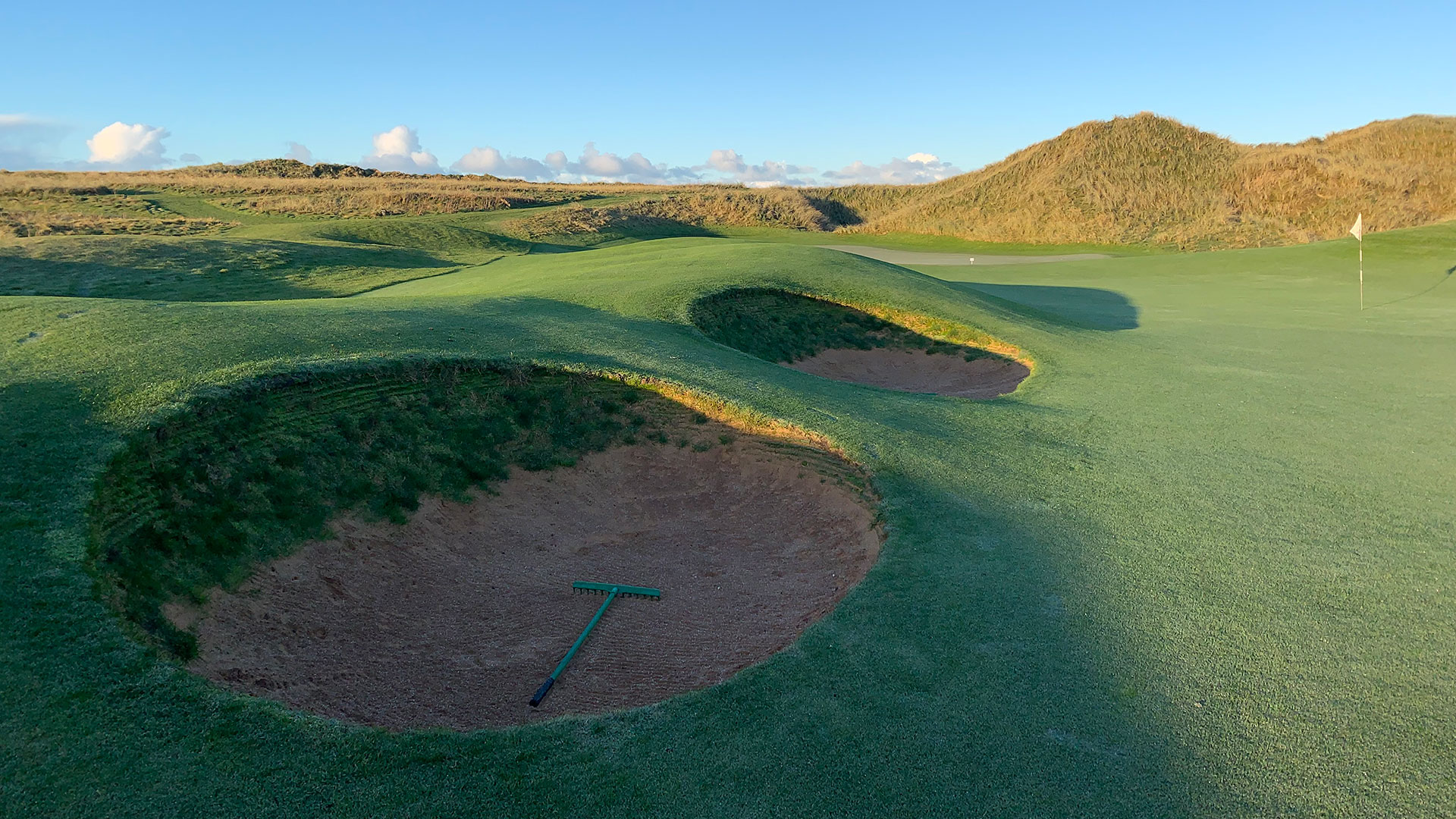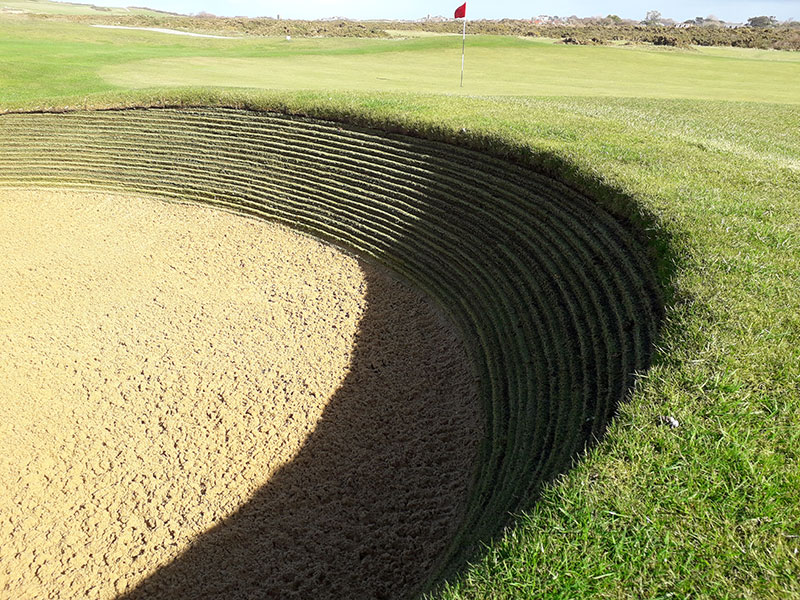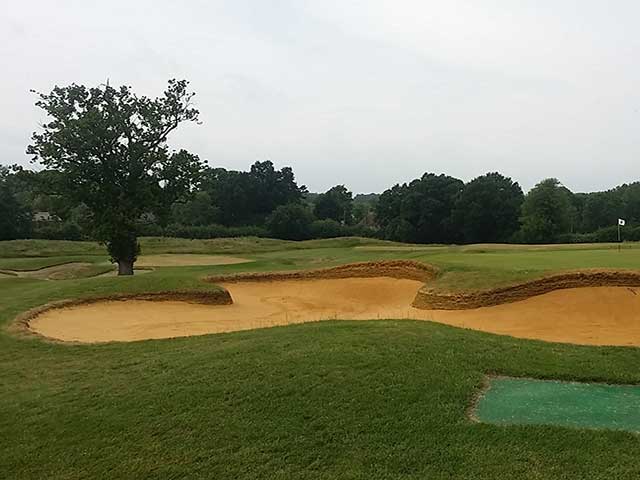This is the land where the game we know today started to evolve in Scotland. The word links comes from the Anglo Saxon word ‘hlinc’ meaning ‘land with ridges’ referring to the undulating dune land adjacent to the coast. This land was of low agricultural value, and only suitable for very rough grazing meant that it was available for other pursuits, like golf. Links courses are generally characterised by a windy coastal climate, lack of trees, well drained undulating ground, fine bents and fescue with rough marram grasses and sand hollows which we refer to as bunkers.
The original golf links bunkers formed naturally where overgrazed depressions were enlarged by burrowing animals and wind erosion. However, as the game became more popular it became desirable to protect the most heavily trafficked areas, the putting greens. Various man-made erosion control measures were used to hold back the encroaching bunker edges, including wooden railway ties and, starting in the 19th century, revetting using bricks of thick cut turf. The EcoBunker system uses modern materials and engineering knowledge to deliver a better, more effective and economical erosion control system, without sacrificing any of the traditional aesthetics.


































